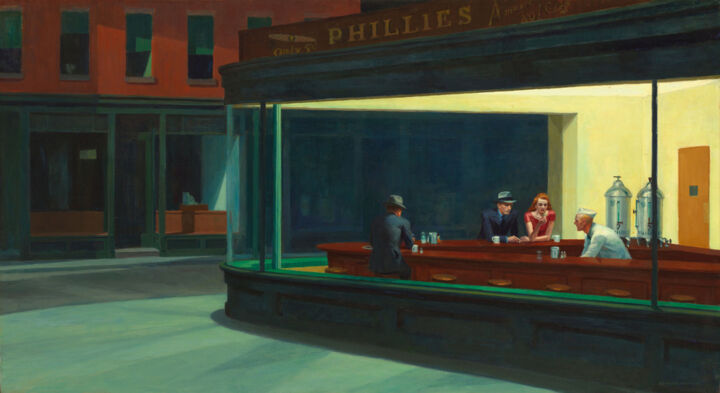
Edward Hopper, Nighthawks, 1942. Art Institute of Chicago.
Created in 1942 by the American artist Edward Hopper (1882-1967), this oil on canvas blossoms in generous dimensions (33.1 x 60.0 in). It’s one of the few world-famous masterpieces that has been the object of only one transaction: just a few months after its creation, it was acquired by the Art Institute of Chicago for the modest sum of $3000. Since then, the artwork has remained on display, except for occasional loans abroad for large-scale exhibitions.
A melancholic artist
 Edward Hopper, Self Portrait, circa 1925. Whitney Museum, New York.
Edward Hopper, Self Portrait, circa 1925. Whitney Museum, New York.
Master of form and light, Edward Hopper is certainly the most famous American artist of the 20th century. Hailed for his enigmatic scenes, urban landscapes, and silent characters. He’s THE painter of solitude and alienation of the individual in modern society.
Divided between realism and naturalism, his paintings illustrate the America of the early 20th century: an America romanticized, mystical, an America of small towns, long drives, and melodramatic interactions.
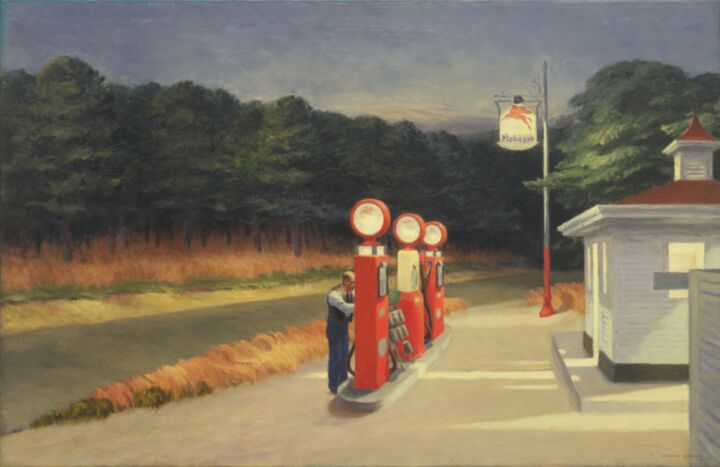
Edward Hopper, Gas, 1940. Museum of Modern Art, New York.
Edward Hopper's compositions are always sober. The artist eliminates unnecessary details, allegories, and refuses direct dialogue with the viewer: with him, everything is suggested, and the alchemy with the artwork is achieved in the contemplator's thoughts. His vision of life, expressed in his paintings, is timeless. Outside of time, his universal characters reaches an ever-widening audience.
The symbol of an American mythology
This painting could have been invented by a filmmaker. The composition opens on the corner of a dark and deserted street. Like an aquarium or a glass cage, a typical American restaurant (the famous diner) stands out from the surrounding darkness.
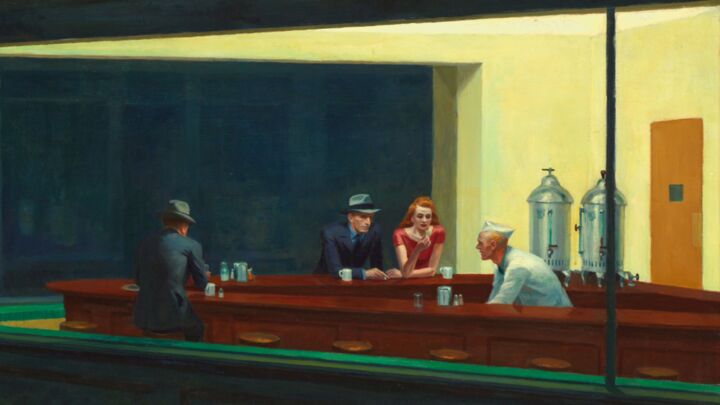
Edward Hopper, Nighthawks (Details). Art Institute of Chicago.
Who hasn't dreamed of being transported into a Hopper painting? To be teleported in this dark street, like a silent passer-by contemplating enigmatic interactions in a religious silence?
This diner, named Phillies as the sign above the windows testifies, is a refuge for these night birds (Nighthawks). The scene isn't a material reality, it wasn't painted on the spot like the impressionist painters that Edward loved. It was created in the studio, based on a mixture of imagination, old drawings, and memories in the painter's mind. The result of this precious blend is a cocktail of melodramatic fascination, an invitation to analysis and meditation for the viewer.

Edward Hopper, Nighthawks (Detail). Art Institute of Chicago.
In the center of the composition, a man from behind reinforces the enigmatic atmosphere of the artwork: what is he doing here, alone? The shadow effects on his suit and hat lead us to consider his inner darkness with more fervor. Even if the clues are meager, one thing is certain: this man has something to blame himself for.
Attention to Detail
If this artwork is the most renowned of the artist, it's also thanks to an impeccable workmanship and to numerous details excellently positioned. Let's take a look at the subtleties of this composition:

The first striking thing in this painting is surely the glass wall that hierarchizes all the elements of the composition. Here, Hopper achieves a pictorial performance by making this window visible at the corner of the bar, then by making it almost disappear on the rest of the canvas, like an illusion, leaving room for a curious spectacle of nightlife.
The artist's mastery is also reflected in the choice and placement of details: each of them responds to each other, often by symmetry, sometimes by contrast. Some elements work in groups: this is the case of the stools, the windows (top left), the base of the window, the bar and the small store. Others work in pairs: this is the case of the coffee percolators and the couple sitting in front of the viewer, both responding to each other.

Finally, let us not forget that Edward Hopper's art magnifies solitude, and Nighthawks isn’t an exception. Many pictorial elements work individually: (obviously) the man from the back leaning against the bar, but also the waiter with his white chef's hat, the cash register visible on the counter of the empty store, but also and above all the orange door, at the right edge of the composition and in full light, which contrasts with the ambient darkness of the street at the far left of the canvas.
As you can see, behind this apparently sober and glossy artwork lies a real complexity and a particularly fascinating attention to detail. For the journalist Gérard Guégan, "Edward Hopper is the real America, the America of brown, tawny and electric blue in the night that worries. Hopper is the painter of a century that is drifting. One day in the future, we will read America through him.".
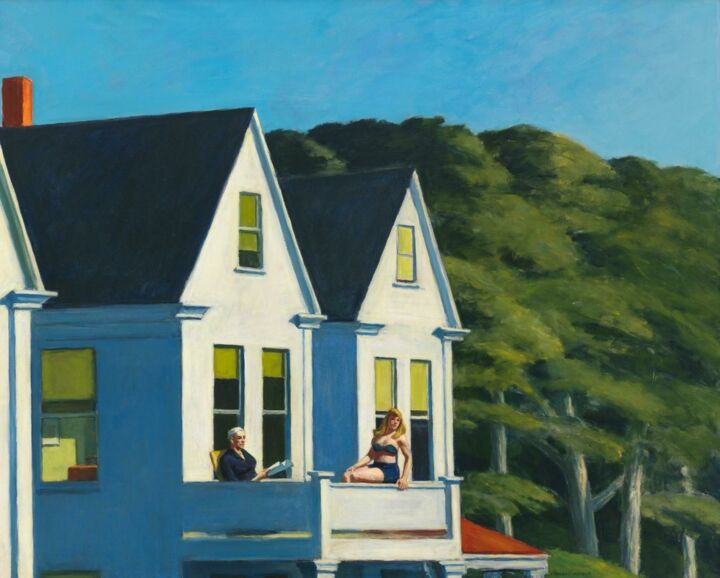
Edward Hopper, Second Story Sunlight, 1960. Whitney Museum, New York.
The poetry and smoothness of this painting quickly made it a legend in Art History. Since its creation, many artists and cartoonists have appropriated the artwork to serve different purposes: sometimes a simple, well-thought-out reference, sometimes a careful satire of the American spirit.
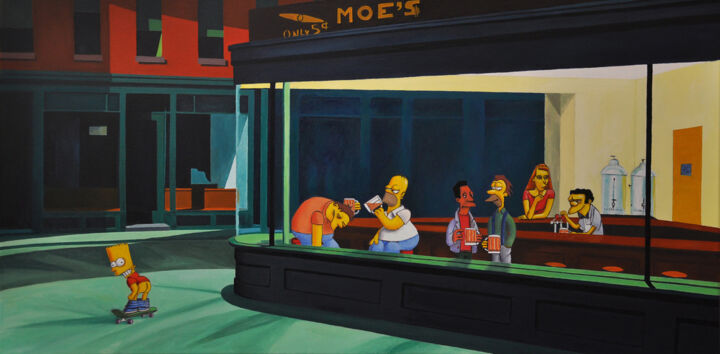
Sebastien Devore, Moe’s Bar, 2020. Prints available on Artmajeur.
Hopper's images are like truncated photographs of a distant period: we end up believing in their truth, sometimes forgetting that they have been romanticized, imagined by an artist of refined talent.


 Bastien Alleaume (Crapsule Project)
Bastien Alleaume (Crapsule Project)